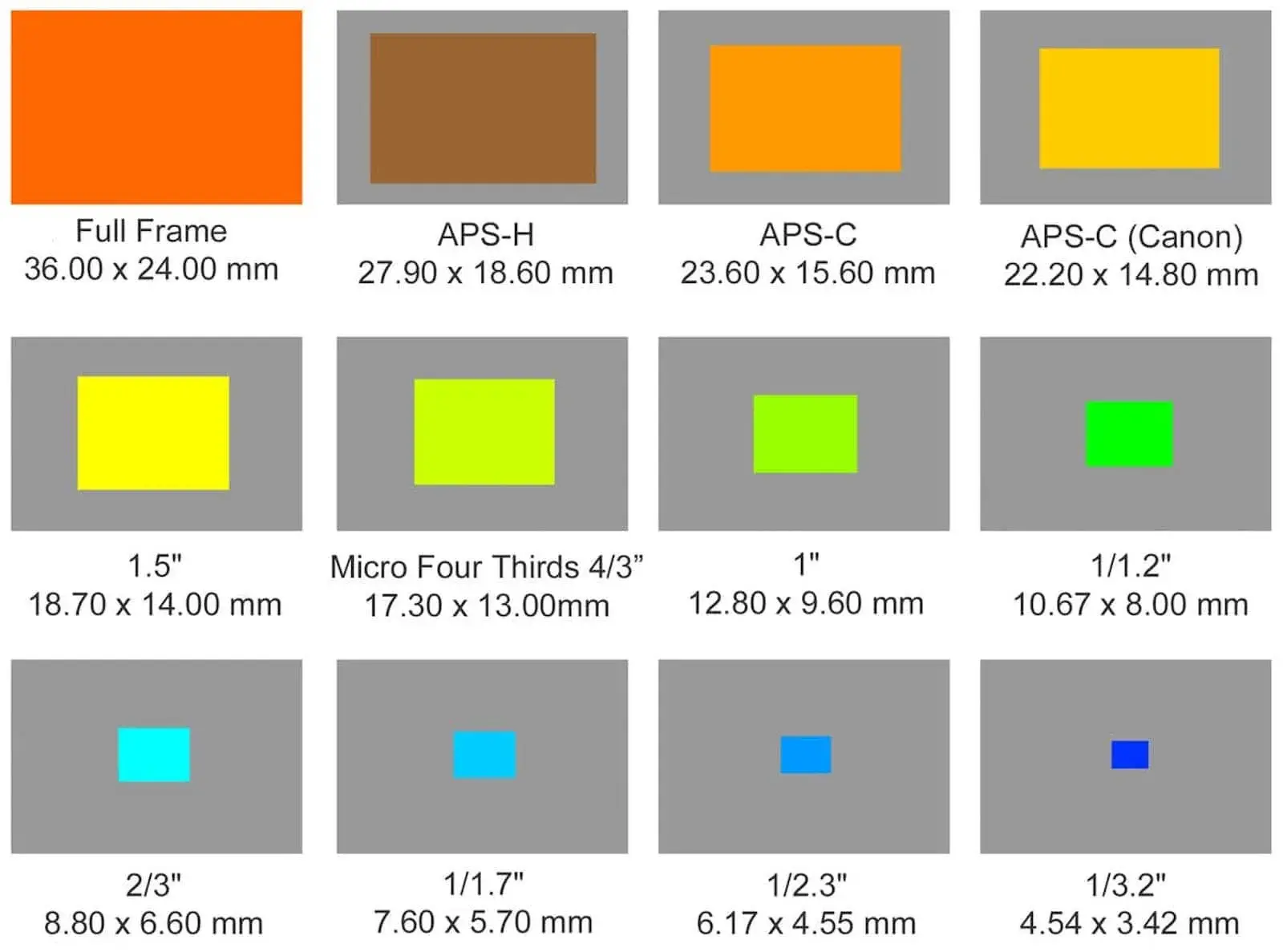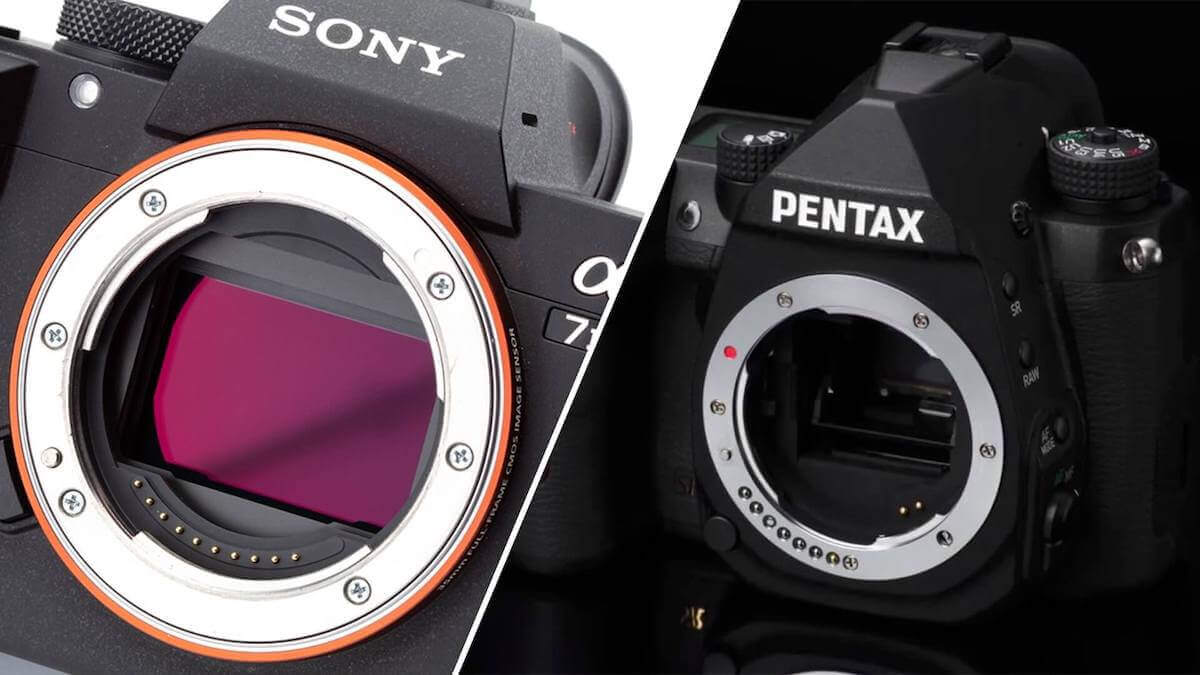When you get yourself a new digital camera, you have to choose between whether you want a crop sensor or full frame sensor. While one could easily say that the differences between the two are in their names (literally fuller frame vs cropped frame), there is a bit more to it than that. So as we dig into the full frame vs crop sensor world, we will talk about noteworthy differences, including which sensor could be best for you and the difference between full frame and crop sensor.
Full Frame vs Crop Frame
Full frame sensors explained
Before a full frame camera vs crop discussion, we’ll define the full frame sensor on its own. Not everyone uses a full frame sensor, but it sort of acts as the standard from where other sensors come from. You can actually learn more about camera sensors and their importance in our other article.
FULL FRAME DEFINITION
What is a full frame sensor?
A full frame sensor is a sensor with the same size dimensions as that of 35mm celluloid film. Using a square frame, it uses the largest amount of space possible that is provided by the full projection of a given lens. Due to the size of the sensor and lenses needed, it’s among the most expensive and professional camera sensor options available.
Full frame sensor characteristics:
- Standard size used by 35mm film stock
- Broad dynamic range and high quality
- Shallow depth of field
- Works well with extreme ISO speeds
- Heavy and expensive equipment
You can learn about cropped vs full frame DSLR options, and full frame sensors in general, in the video below.
Cropped vs Full Frame DSLR
Full frame photography usually involves wide open spaces, and that can include architectural and nature photos. Anything that would require a lot of space, a full frame sensor will capture it, outdoors or indoors. This also means a full frame sensor has a shorter focal length, which can make the resulting image look softer than it otherwise might.
Related Posts
Crop vs Full Sensor
Crop frame sensors explained
The next step down after a full frame sensor is a crop frame sensor. Being literally smaller than a full frame might make it seem inferior, but when it comes to crop sensor or full frame, it’s really dependent on what you’re trying to capture.
CROP FRAME DEFINITION
What is a Crop Frame Sensor?
A crop frame sensor is a sensor that has smaller dimensions than that of a 35mm film frame. The size difference between a crop and full frame sensor can vary, but the crop will always be smaller, hence the name. Since the camera and lens of a crop sensor is smaller and lighter, they can be less expensive than the other options available.
Crop frame sensor characteristics:
- Smaller dimensions than 35mm film stock
- Greater reach than a full frame sensor
- Naturally lower image quality
- Lighter and less expensive equipment
Since the size of a crop can vary, you can take a look at the chart below to get a sense of what those camera sensor sizes can be and how they will differ from a full frame sensor.

Full frame vs crop sensor chart
And to see why someone might prefer to shoot with a crop sensor, and how it differs from a full frame sensor, take a look at the video below.
Crop vs Full Sensor
So yes, a crop sensor is a smaller size than a full frame sensor, which means you will be getting less image space in your photos. It’s a natural part of the process, which is why crop sensors use focal length multipliers to increase their magnification. When using a lens with a low focal length multiplier, you will have a wider view (so the subject looks further away). But when using a lens with a high focal length multiplier, you will have a narrower view (so the subject looks closer to you).
Full Frame Camera vs Crop
Pros and cons of full frame vs crop
Inevitably, the prospective photographer must contend with a full frame sensor vs crop sensor. There are a few distinctive factors that can be split into the pros and cons of full frame vs crop frame. So while each one has its advantages, it will also have some notable disadvantages.
The difference between full frame and crop sensor can be seen in the video below, which digs into the specifics and advantages of a full frame sensor vs crop sensor.
Full frame vs crop sensor video
Now let’s compare and contrast the full frame vs crop sensor with some pros and cons. And remember: both are good options, it’s just a matter of which option is best for you.
Full Frame Pros
It can be easily said that, if you take photography very seriously, you might want to go for a full frame sensor, as it provides the highest quality imagery. It’s excellent for getting nice, large shots of a mountain range, lake, buildings, or other open environments. You can even pair it with a telephoto lens to get specific shots from a far, which is excellent for nature and sunset photos.
Full frame sensors also work tremendously well with higher ISO speeds, which means it works really well in low light situations. This is especially good when you have little control over the environment whatever you’re photographing (e.g., exteriors).
And we can’t forget a full frame sensor's dynamic range that provides the best image quality in the darker and lighter spots of your photographs.
Full Frame Cons
It should also be said that full frame sensors (and their lenses) are very expensive, due to their full frame nature and high quality. On top of that, the equipment is heavy, which makes sense and can be excused if, say, photography is your profession.
Full frame sensors also have a shallow depth of field, so natural bokeh does show up. Speaking digitally, full frame sensors also mean extremely large file sizes, so do not get a full frame sensor if you’re trying to save space on your hard drive.
Crop Sensor Pros
Between full frame and crop, there is a good chance most people will be going with the latter. Price is a huge reason for this, as crop sensors can be much less expensive than full frame ones. They also weigh a lot less, which can be very appealing for novice and casual photographers. So for price and weight alone, crop sensors are a go-to for many fledging photographers.
Where a full frame sensor can capture a big environment, a crop sensor lets you zoom into a specific area better (and for less money). A crop sensor is most desirable for when you really need to focus on something. This makes a crop sensor good for some wildlife photographers (to focus in on an animal) or sports photographers (to focus on individual players).
And as we mentioned earlier, crop sensors take advantage of focal length multipliers to get as much variety and use out of their lenses as possible. In this way, a crop sensor can get a good look at something from a far or take a wider approach to something right in front of them.
Crop Sensor Cons
One thing for certain is that crop sensor photographs will be of lesser quality than a full frame sensor. While a crop sensor can net you wonderful photographs, it will not reach the size and quality of a full frame sensor. So while you get the very best in image quality with full frame sensors, crop sensors sacrifice that quality for ease of use, the size of equipment, and of course, a lower price.
One unforeseen issue with crop sensors are the lenses you need for them. The problem comes when you want to upgrade, as lenses made for crop sensors won’t work for full frame sensors. And if you’re already paying for high quality lenses, it might make having a crop sensor unnecessary, or at least more of a cost burden than it should be.
While a lot of it will come down to the individual photographer, it might ultimately come down to your budget and what it is you’re trying to get a picture of. There are different types of cameras and different types of lenses out there, each with their own advantages, so be sure to do your research and choose what’s best for you.
UP NEXT
Different types of cameras
Now that you have a better understanding of full frame vs crop sensors, take a look at some of the different cameras for video and photography available. We cover a wide range of camera types for all photographers, from compact to digital SLR to traditional.
Up Next: Cameras types →
Showcase your vision with elegant shot lists and storyboards.
Create robust and customizable shot lists. Upload images to make storyboards and slideshows.
